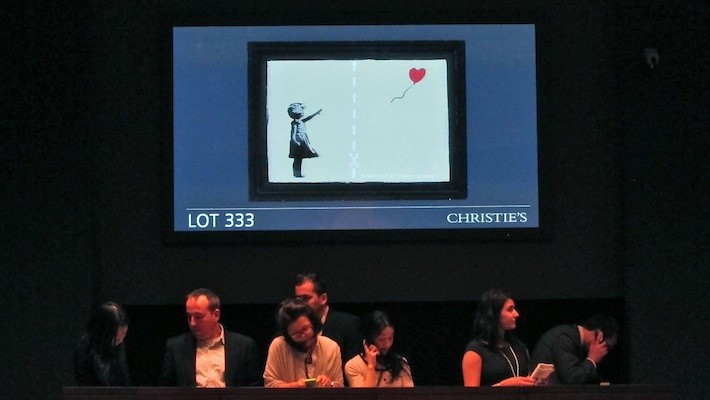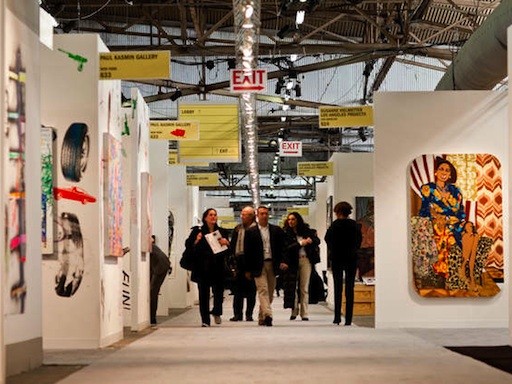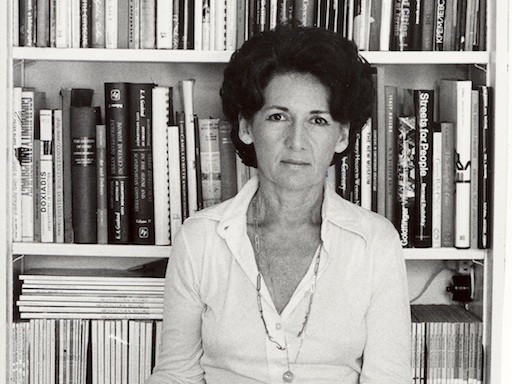— THE BIG STORY —
Art critics often complain about their lack of influence, but last year's ink-stainedrevolt against the murky and financialized art market has bubbled into something resembling real impact: a front-page (front-page!) article in the New York Times casting a sharp light on the unregulated nature of the market. Coming at a time when an unstoppably climbing market, a spate of ugly lawsuits (Knoedler, Gagosian, et al.), and a new drive to treat artworks as investment vehicles divorced from aesthetic considerations, the article, by art reporter Robin Pogrebin and special-projects editor Kevin Flynn, strongly suggests that "monitoring has not kept pace with the increasing treatment of art as a commodity." But, as the piece details, there have been various pushes to ensure fairness in art commerce for decades. Why is regulation so difficult to pull off?
The key can be found in the most commonly flouted existing law governing the art market: that galleries clearly list the prices of artworks for sale. This, of course, would be uncouth—prices would distract the viewer from purely aesthetic considerations (and, you know, if you have to ask…)—just as it would be rude to ask patrons not to drink white wine on the sidewalk outside a gallery opening. Such thinking is a function of a strange exceptionalism that the art world has carefully managed to cultivate, in which white-glove, gentlemanly sporting rules apply rather than laws. Just look at collector Ronald Perelman's lawsuit against Gagosian, which at bottom can be read as a complaint over a breach of etiquette—between two friends who have been "guests in each other’s homes, have met often for dinner or drinks, and have attended the same social events," as the suit details—rather than a legal infraction. It's as if Jean Renoir's classic expose of the entre-nous French aristocracy, The Rules of the Game, suddenly and unexpectedly entered the courtroom.
The most glaring examples of art-market exceptionalism, however, take place not in the courtroom but in the auction room, where, as the article notes, sales results are "the industry's prime metric for measuring value." The way that the elite manage to place their thumbs on the scale—through chandelier bids, third-party guarantees, and syndicates—is especially notable here, because the average consumer necessarily relies on the taste and connoisseurship of sellers to present fair prices. After all, the art market is predicated on a suspension of belief—that a person walking into a gallery is not a buyer looking for a commodity but a truth-seeker hoping to find an authentic aesthetic experience. That, again, is why prices are so often a no-no. And while there is much truth to the fact that money considerations can overpower or derail that experience, making it impossible for a buyer to distinguish between his or her esteem for an artwork and its price, there can certainly be a greater balance that protects the average consumer. (At Artspace, incidentally, we always list prices.)
Who knows? Increased regulation, handled tactfully enough not to veer into nanny territory, could help the art world expand far beyond the elite into the wider consumer economy by giving less-informed buyers some peace of mind. To think otherwise would be to demonstrate a lack of faith in the underlying integrity of the art object as a market good—a fear that too much insight would spoil the magic act—and that would not just be ungentlemanly, it would be dumb.
— QUOTE OF THE WEEK —
"What’s exciting is to feel at the very beginning of something. It’s also terrifying starting from scratch, but panic has always energized me. It’s the same process as anything: identifying who your heroes are, figuring out what they did, and then just going and doing it. I can stare at my Lucian Freud book for hours and hours, but at a certain point you have to go to the wall and imitate. So it’s very basic right now: Can I make things look the way I want them to look? That’s where I’m at right now…. I’m always curious to hear how something was made—though I have no interest in why an artist did something, or what his work means. Like with Jackson Pollock: I’m always interested in what kind of paint and canvas he used, I just don’t want to know what he meant. You’re supposed to expand your mind to fit the art, you’re not supposed to chop the art down to fit your mind." — Celebrated filmmaker Steven Soderbergh on his transition from directing to a career as an artist
— MUST READ —
Louis Vuitton Collaborates With Chapman Brothers — For the fashion megabrand's Paris men's show at the Grand Palais, designer Kim Jones commissioned YBAs Jake and Dinos Chapman to art up the clothes with a print depicting what Jones calls "all about those crazy, weird and wonderful animals that you have in the Himalayas, which have been twisted by the Chapman brothers so they look scary-cute." (Guardian)
What Are the World's Best Museum Gift Shops? — According to Departures, they include Berlin's Hamburger Bahnhof, London's V&A Museum, and the Brooklyn Museum. (Departures)
Philippe de Montebello Would Agree — In a humdinger of an op-ed, antiquities-restitution expert Hugh Eakin writes that the trend of American museums obligingly returning contested objects to their source countries—Italy and Greece, primarily—"has done little to halt the international trade in looted antiquities, while rewarding the hardball tactics of foreign governments and impoverishing Americans’ access to the ancient world…. [And] the overriding focus on restitution has directed valuable museum resources toward disposing of works acquired long ago when the most urgent priority should be protecting threatened archaeological sites today." (NYT)
George Condo Bows at the Met Opera — The painter, whose career has been exploding over the past two years, has taken his unsettling style to New York's premier highbrow venue with a black-and-white banner of a court jester to announce the Met's new production of Rigoletto, accompanied by a show of his art at the Gallery Met. (NYT)
— ART MARKET —
Frieze NYC Announces 2013 Projects — Curator Cecilia Alemani has brought on Marianne Vitale, Liz Glynn, Maria Loboda, Mateo Tannatt, and Andra Ursuta for this year's series, which will be accompanied by a remake of Gordon Matta-Clark and Carol Godden's legendary Food restaurant and "and original text by novelist Ben Marcus." (Press Release)
Metro Show Art Fair Returns to NYC — The Chelsea art-and-antiques event, Ken Johnson writes, brought collectors to the Metropolitan Pavilion with an array of work by outsider artists and other lesser-known figures that brought "the visitor down a rabbit hole of American imagination untamed by conventional training." (NYT)
Winter Antiques Show Revives "Gilded Age" — The posh Park Avenue Armory fair was themed to Newport's historical patrician past this year, making its treasure trove of art and gilded decor even more hoity-toity than usual. (NYT)
Lehmann Maupin Plans March Honk Kong Opening — The New York gallery will open its overseas outpost on March 14 with a show by Lee Bul that will fill its Rem Koolhaas-designed space in the city's Pedder Building. (Press Release)
— IN & OUT —
Creative Time has tapped Nick Cave to create an immersive installation-cum-performance piece called HEARD-NY in the middle of Grand Central Terminal this March, filling the historic space with 30 colorful "horses" embodied by dancers wearing the artist's signature "Soundsuits." (Press Releaes)
This year the Tribeca Film Festival will be presenting its winners with artworks donated by 12 artists, including Clifford Ross, Robert Longo, William Wegman, and Dustin Yellin. (Press Release)
The Appraisers Association of America has chosen Ai Weiwei as the winner of its 2013 Appraisers Association Award for Excellence in the Arts. (Press Release)























